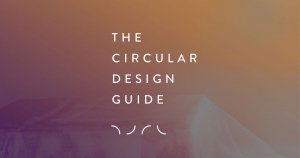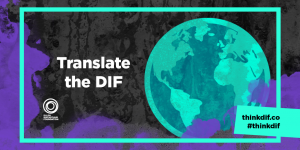Sarah O’Sell has over 10 years of experience in award-winning impact entrepreneurship, community organizing, education, and was the global design manager for an international fashion tableware company. She currently consults in systems design, emerging tech strategy, and hosts the Women in 3D Printing Seattle meetup. She actively volunteers with STEAM education and empowerment organizations – her goal is to inspire open minds, curiosity, and stewardship for the future of our Spaceship Earth.
Give us some knowledge on your background?
I grew up in the Pacific Northwest and spent a lot of time outside. My family was a farming family. We recycled even before it was available locally, so I was very aware of systems thinking and why we need to process our materials with care. In highschool, I started to get into competitive entrepreneurship and formed the belief that business (paired equally with design and technology) is how we change the world.
I pursued industrial design engineering at Western Washington University, a program which has a rare focus on sustainability. Much of the material that I learned through the program was difficult to find on the internet, even now; life cycle assessments, material integrity, chemical hazards, biomaterials… It was here that I realized the outstanding potential of 3D printing for a regenerative world. In the last two years of college, I co-founded a solar tech startup with eight other students that won EPA government grants and international attention. We learned that the product could not be a Living Future Product (one of several clean product frameworks) due to the inclusion of red list chemicals – a common problem with materials innovation when post-use materials management is not considered up-front.
After university, I became the first Industrial Design Manager at an international tableware company, where I introduced 3D Printing to win clients and for mold making at our factories abroad. With every product, I tried to build for sustainability, but with tight timelines and limited suppliers, the best I achieved was process efficiency and cardboard engineering to remove foam packaging materials.
In early 2017, I moved to the Bay Area to research how design firms tackle this challenge and came to the conclusion that it’s not a priority, though the Circular Design Guide was launched later that year. Even now, sourcing data is not accessible for companies to understand up-front how they can build products with sustainability in mind. This will become increasingly important as we move to a distributed, gig workforce. Scale with new innovations requires investment for machine build-out and relationship management over several years. Product design for post-use materials management or even understanding exactly what material we are using can be a challenge. The biggest barrier with the startup I had been working on was the amount of investment needed for new production infrastructure and a lack of legal market incentive akin to LEED in the consumer product space.
What initially got you interested in the concept of the Circular Economy?
3D Printing is directly related to this. Historic machine processes consist of giant, specialized production lines built for a capacity of hundreds of thousands of units. When we are only focused on marginal cost efficiency,over-production is embedded by design. 3D Printing is modular. We can create the products that we want, customized for each unique individual, with the material that we want, where we want it, at a local level. Generative modeling techniques can reduce material use while increasing strength properties. As we build out this infrastructure, we’ll have a digital record of what was produced for who, where, and can create an incentive for local take-back programs. We have the capacity to share product files around the world without distribution emissions – this is HUGE!.
What are some main topics people should be focusing on in terms of a Circular Economy?
What goes into the system must be continuously cycled throughout the system. While this concept has been around since the 1970s, we have been challenged in implementation because we must recognize the reality that 1) historically cheap and plentiful raw materials like trees are limited and running out, and 2) growth models of business now need to consider producer responsibility and investment in post-use processing. For example, a filament supplier must include recycling or compost instructions and our 3D models must be properly labeled. While we continue to cycle, this must always be focused on reducing waste and hazards. This means localization and considering substitute materials, such as bioplastic or alternatives like hemp (example of material properties assessment). I have yet to see biomaterials for SLA or SLS processes.
China is stepping away from its place in the world as the major recycling hub. What other nations are stepping up to fill this void?
Unfortunately, our most impoverished nations are taking this on. This is not helpful because this introduces hazardous chemicals to environments which lack the regulation and infrastructure to properly handle them, putting workers, local communities, and our greater society in danger. We so often forget that our air and water is shared. Winds will carry the toxic smoke from Africa – where much of our e-waste is sent and BURNED to extract the metals – everywhere else.. The most progressive nations include the UK and the Netherlands, which have implemented and are ACTING ON local infrastructure investment and innovation programs. While I highly respect the actions China is taking – sustainability is just as much a social issue as it is an environmental one. We cannot have positive change without supporting EVERYONE as we change, even our most impoverished neighbors.
What are ways people can be involved with this on a larger scale?
There are industry movements like #WHOMADEMYCLOTHES by Fashion for Good. The Ellen McArthur Foundation is making a push for #CIRCULARDESIGNERS within the Circular Economy. The UN has the Sustainable Development Goals – remember #17 is COLLABORATION. It is especially important to take initiative on education. The Thinkdif platform is fantastic for those who are just starting out. There are several conferences as well which broadcast their media, Circularity by GreenBiz is one. My best advice – just start meeting and talking with your friends! We “be the change” by engaging with our local community to scale our efforts.
What are your thoughts on education in this field?
Historically, this has been something that you study and there is not much government funding for innovation outside energy infrastructure, which has a clear economic connection to efficiency. As we move towards a more automated, robotic manufacturing systems (check out Zen Robotics!) – and this relates to 3D printing – we will need to consider how our machines can understand materials, software is lagging across the board, and keep a lookout, local governments are beginning to offer grants to tackle the issue that we have almost 10,000 independent recyclers across this country with differing infrastructure and no common labeling standard… Supply chains are not required to share information about their activities and the competitive paradigm encourages secrecy. Yes, investing in sustainability requires upfront costs and whole-system training, but the benefits in the long term far outweigh the initial hit. Starbucks has done outstanding work in Corporate Social Responsibility as an example. Check out this report by the Sustainable Purchasing Leadership Council for financial starting points. . Consumers will pay – 90% of sustainability marketed products actually perform better than their competitors. Not many people are in this field, but as you can see from the resources I have shared, information is becoming more accessible.. Global leadership has been a focus, without top-down investment, we cannot move forward. Did you know that the 2018 Super Bowl was the first Zero Waste event in NFL history? Thanks, Recycle Across America!
Subscribe to Our Email Newsletter
Stay up-to-date on all the latest news from the 3D printing industry and receive information and offers from third party vendors.
You May Also Like
Profiling a Construction 3D Printing Pioneer: US Army Corps of Engineers’ Megan Kreiger
The world of construction 3D printing is still so new that the true experts can probably be counted on two hands. Among them is Megan Kreiger, Portfolio Manager of Additive...
US Army Corps of Engineers Taps Lincoln Electric & Eaton for Largest 3D Printed US Civil Works Part
The Soo Locks sit on the US-Canadian border, enabling maritime travel between Lake Superior and Lake Huron, from which ships can reach the rest of the Great Lakes. Crafts carrying...
Construction 3D Printing CEO Reflects on Being Female in Construction
Natalie Wadley, CEO of ChangeMaker3D, could hear the words of her daughter sitting next to her resounding in her head. “Mum, MUM, you’ve won!” Wadley had just won the prestigious...
1Print to Commercialize 3D Printed Coastal Resilience Solutions
1Print, a company that specializes in deploying additive construction (AC) for infrastructure projects, has entered an agreement with the University of Miami (UM) to accelerate commercialization of the SEAHIVE shoreline...

































